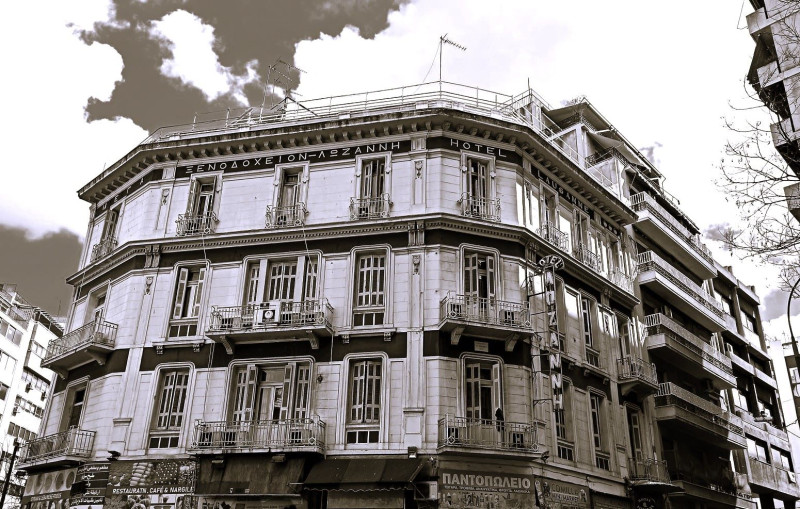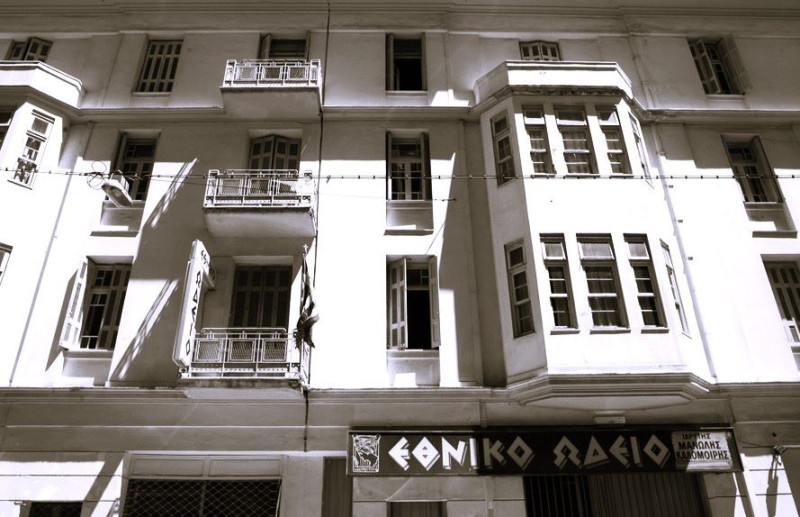The years of Otto, the wider area of Vathia was a beloved place of aristocratic residence
Independence Square is the official name of Vathi Square (and not deep where the folk song says), but they rarely call it. Its old name was written with indelible ink in history and passed into the consciousness of generations, born and brought up here, even if it was somewhat unmistakable with its aristocratic backgrounds.
From the years of Otto, Bavarian officials settled in the famous Athens Square, believing then that they would be next to the palace, because the area was one of the proposed to build the royal residence. But even when the Boubunistra hill (Syntagma Square) was finally qualified for the settlement of the palace, the wider area of the depths evolved into a suburb of Athens, a beloved place of aristocrats with an orgy nature from the water of the circular, the water.
The many versions of the name
In 1833 Kleanthis and Saubert incorporated the depth into the Athens planning design. According to the vision of the two architects, Kydoros would be converted into a buffalo (walk Avenue). That’s what it was, but it was too late. We were at the end of the 19th century. The Cyclone remained a feeder of nature until once, in the deep point of the soil, where its waters were lacking, the square called Vathi or Vathis was created.
However, the versions of the name of this square have been so much so that the official is still ignored today.
In one version, the name is attributed to a homonymous family included in the list of more than 1,600 Athenian families until 1821. ‘Godfathers’Athenians, by taxpayers, with financial surface and land.
Another chronicler of the time, historian Themistocles Philadelphus, seeking the origin of the name of Patissia, records a long history of the municipality of Vatis, where nearly a century later, today’s Vathi Square was incorporated.
According to “Harmony” magazine (vol. 7, 1900), according to the first Greek archaeologist Kyriakos Pittakis, “…The Municipality of Vati was where now the location is deepaccording to Hydamalon (Low) that Pedion the west of Athens text and defined south by Sepolia and Kolonos Street, east by Patision Street … “.
In the early 1900s the square begins to take its current form
In the turn of the century And as the area has already begun to gather a population, which is unable to find a roof in the city center, where locals and foreign aristocrats have now been installed, The stream of the circulation is driedthe “haunting ground” is leveled and all that remains to be reminiscent of the past is a tree. A poplar. The famous poplance poplarwhich also throws her last leaves in 1926 and is uprooted.
But this square is not lacking in luxury and nobility.
Foreign Philhellenes, supporters of the national liberation struggle, have baptized the streets of the wider area with their names before they are well paved, and around the square are abducted one after the other elegant two -storey neoclassics.
Already in the area there was the mansion of the Moldovan lantern ruler and a member of the Friendly Society, Michael Voda Soutsou. It is a mansion that stands imposing in the center of a huge garden, covering the current Sourmeli-Acharnes-Voda Liossia building block.
In 1920, at the Kapodistriou and Marni junction, in a huge position, an impressive eclectic building with a rich exterior decoration was built. It is the hotel “Lausanne” (in 1994 it will be declared preserved).
A few years later, in 1926, at the intersection of Maisonos Street with Mayer, Manolis Kalomiris, Marika Kotopouli and Dionysis Lavrangas housed the National Conservatory in a magnificent newly built building.
The area of Vathia, around the square, has taken over it … It is at a distance from the slightly noisy center of the city, where the Earth has been saturated with houses and activity.
After the adventures of the war and the Civil War, the place has entered a building orgasm and the depth – within walking distance of the impressive experimental buildings of the young architects, the Neo -Primarok Livieratos Palace of Al. Nikoloudi (Patissia and Epirus – built in 1909), the classicist Isaiah Palace in designs P. Zizila (Patissia and Julian – built in the 1920s) or the 4 -storey apartment building of Tsagri, which combines classic and Articles 26 Frame of utilization.
In the last 50 years before the expiration of the century, the urbanization of Athens and the extensive building activity through the consideration system will give the area of a new character.
Today’s square
By decades 1980 and 1990 The physiognomy of both this apartment building and the whole area changes. The processes that play a role are the transfer of real estate to future generations, who are looking for the outskirts of cities, and the cities, and the Inflow of immigrants.
After 1990, with the collapse of the Eastern Bloc, in the area next to the existing ones, several Poles and nationals of other Eastern European countries have been installed.
In the apartment building on Epirus Street, there are few Polish, Ukrainians and Moldovans. Most come from countries of Africa, Indian peninsula and Central Asia.
The departure of the Greeks and the arrival of foreign immigrants many of whom resort to delinquency is a treaty that has thrown the value of the area.
The few natives, who are necessarily or by choice remain in their properties in depths, are complaining about this bustling transnational bee, who with him dragged it. Substance users, prostitution, crime.
In recent years, Vathi Square has justified its official name.
It is a square where the independence of the passerby, the resident or the homeless user have been guaranteed. The image of the motley does not surprise anyone, so as the number of short -term rental real estate appears particularly high in the area, tourists have been added to the overall plan, which wandered their suitcases looking for the long -lived house. They are the only ones who look at the stranded bodies on the sidewalks …
Source: Skai
I have worked as a journalist for over 10 years, and my work has been featured on many different news websites. I am also an author, and my work has been published in several books. I specialize in opinion writing, and I often write about current events and controversial topics. I am a very well-rounded writer, and I have a lot of experience in different areas of journalism. I am a very hard worker, and I am always willing to put in the extra effort to get the job done.












